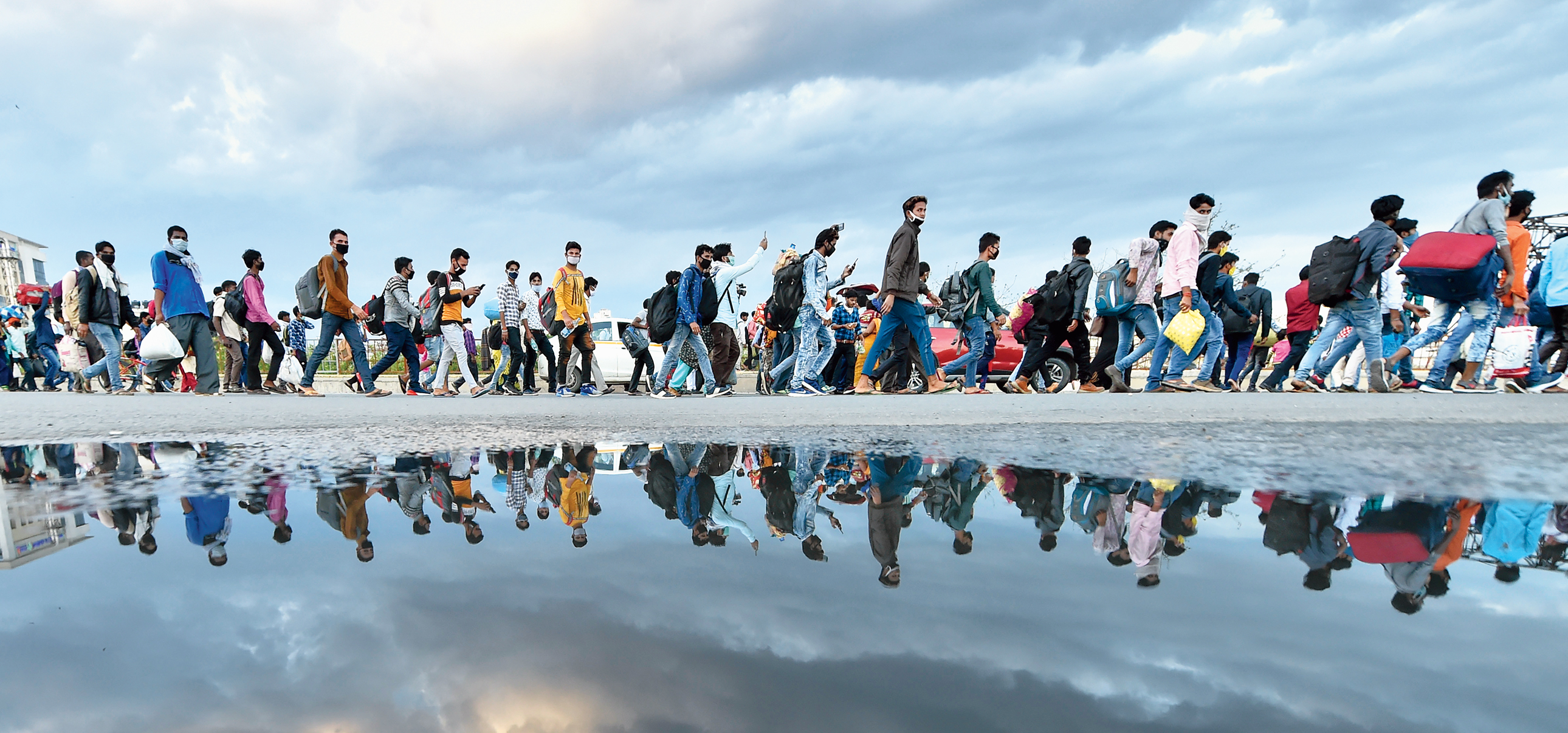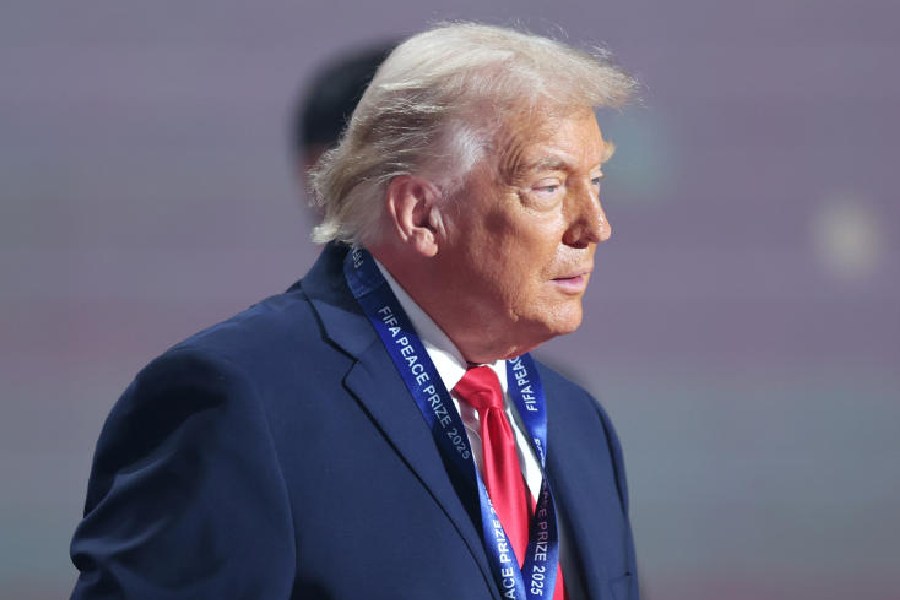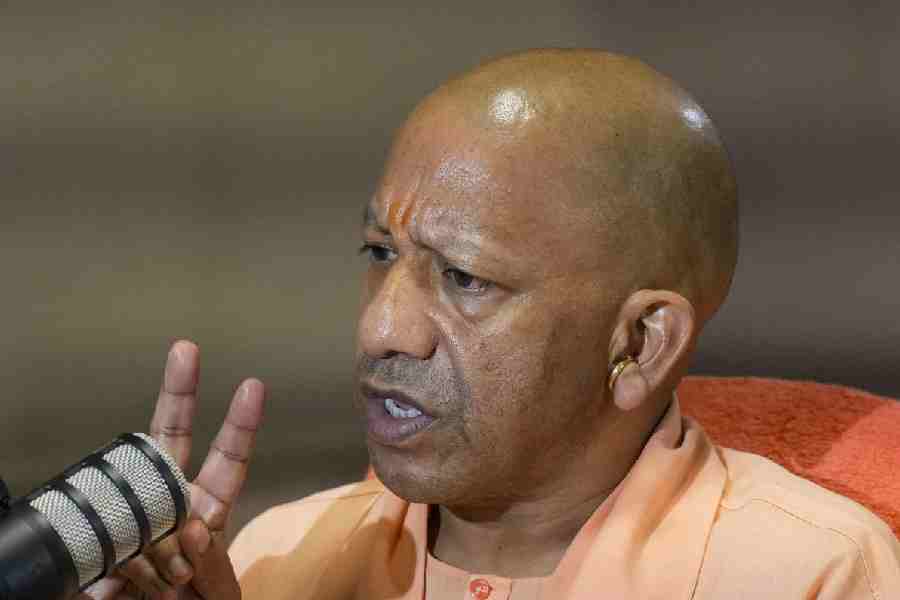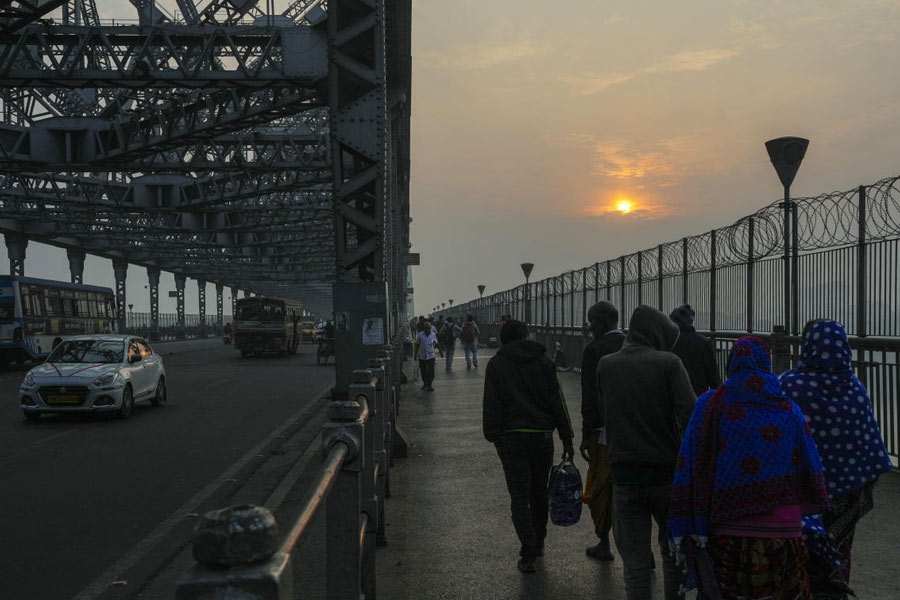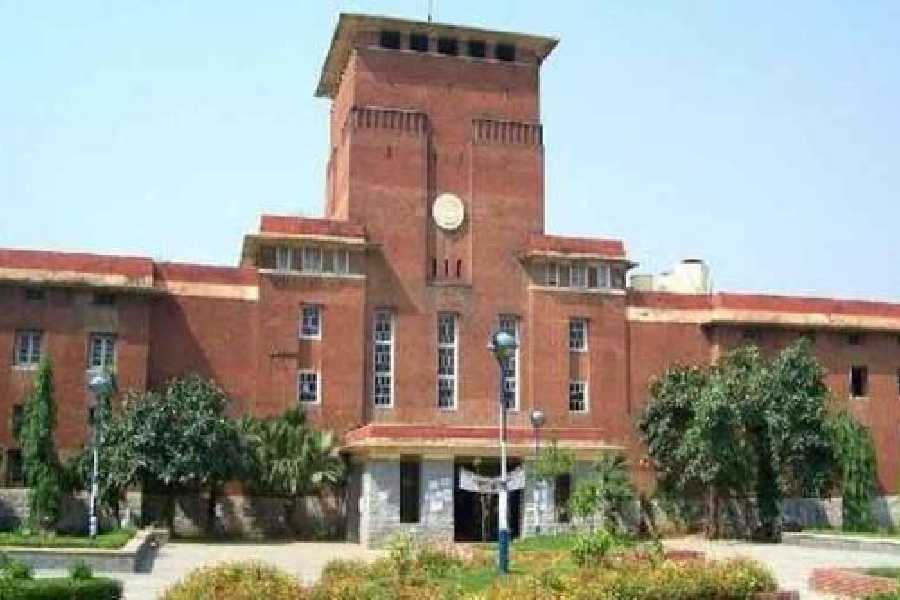India’s delay in imposing home quarantine on every incoming traveller even after it had introduced health screening for all air passengers arriving from abroad may have fuelled the spread of the novel coronavirus in the country, health experts have said.
India began screening air passengers from China on January 18 and added more countries to the list earmarked for screening as the pandemic expanded worldwide.
But it wasn’t until March 17 that the country issued a directive ordering all incoming travellers to stay home for 14 days.
During the intervening two months, the Union health ministry had in consultation with other government departments issued 14 travel advisories, enforcing home quarantine on travellers from China on February 5 and gradually expanding the list by including 11 other countries by March 16. (See chart)
But through those weeks, many incoming travellers from other coronavirus-affected countries — having received no orders to remain at home for 14 days — met friends and relatives, visited malls and parties, even travelled by train.
Between January 18, when airport screening began, and March 14 — three days before the health ministry ordered home quarantine for all passengers from abroad — 1,229,363 or over 12 lakh passengers arrived in India on 11,406 flights, as documented by the health ministry.
“Even after it became evident that the entire world was dealing with a contagious infection, India red-flagged only some countries for home quarantine,” said T. Jacob John, a senior medical virologist and emeritus professor at the Christian Medical College, Vellore.
Senior health ministry officials have stressed that India steadily “escalated its responses”, expanding screening, surveillance, testing and public hospital preparedness and tracing several thousand contacts of coronavirus cases.
But while India introduced thermal scans and health checks in airports on more and more travellers as the weeks went by, the directives for mandatory home quarantine lagged behind the pandemic’s footprint, John and other medical experts said.
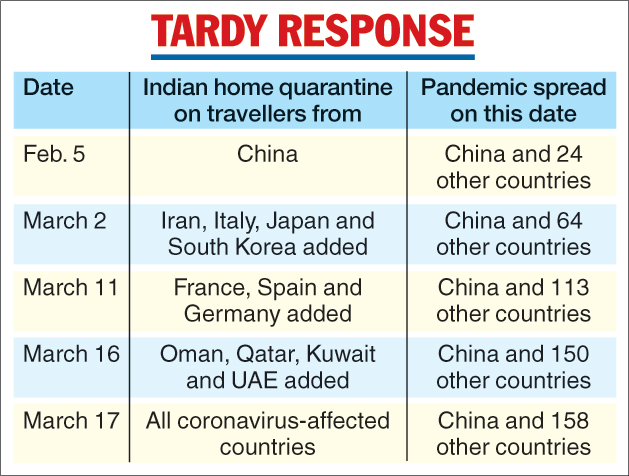
Some experts requested not to be named because they did not want to appear critical of the government when it was trying its best — in other ways — to respond to the coronavirus.
“Everyone knew thermal scans would not pick up passengers incubating the virus with no fever. Everyone knew such infected persons would walk through,” said one infectious disease expert.
“Every passenger should have been seen as a potential carrier and told to stay home for 14 days. An early strong order forcing home quarantine on all travellers could have helped lower the number of people infected in the country now — a number we still don’t know.”
By February 26, the coronavirus had spread to 37 countries. But India’s travel advisory, while urging people to refrain from visiting Singapore, South Korea, Iran and Italy, said travellers returning from these countries “may be quarantined”.
By March 2, when the coronavirus had spread to 65 countries, the travel advisory said people returning from China, South Korea, Italy, Iran and Japan “will be quarantined”.
The health ministry imposed universal health screening and self-declaration forms at airports for all incoming travellers on March 6 but did not order mandatory home quarantine even then.
Instead, the March 6 advisory said: “If a traveller felt sick (cough/fever and difficulty in breathing) within 28 days after return from coronavirus-affected areas, they should immediately report to health authorities, isolate themselves at home and wear a mask until a doctor from the health department had examined them.
When Bollywood singer Kanika Kapoor returned from the UK on March 9, there was no directive in place for 14 days of home isolation.
A March 10 advisory acknowledged that the coronavirus had spread to more than 100 countries, but “recommended” 14 days’ home isolation only for passengers from China, Hong Kong, Iran, Italy, Japan, Singapore, South Korea, France, Spain and Germany.
On March 16, India extended home quarantine to passengers from four other countries — Oman, Kuwait, Qatar and UAE — and blocked travellers from Europe from entering India. But it did not order home quarantine for all incoming travellers.
A directive for 14 days’ home isolation for all incoming travellers from coronavirus-affected countries emerged from the Indian Council of Medical Research on March 17.
Only a day later, on March 18, the Centre published a standard operating procedure document specifying that asymptomatic passengers would need to stay home. The document proposed that these passengers would receive “home quarantine stamps” on their passports.
Some public health experts and virologists contended, though, that while mandatory home quarantine for all passengers could have kept the number of infected people smaller, it is unclear how many would have followed such orders.
“There is little use doing such dissection now,” said Sudhanshu Vrati, a senior virologist and executive director at the Regional Centre for Biotechnology, Faridabad. “Four weeks ago, do you think people would have adhered to home isolation directives?”

